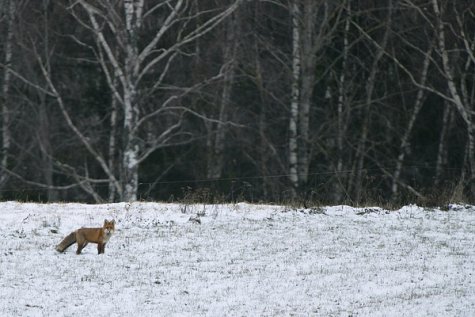Foxes in winter coat
|
Rebane Fox |
It will take a few days for our forest inhabitants to get used to the new world, but then hunger will force them to move, in spite of being apprehensive.
At least the foxes have their winter coats on, but with the cold the fur will become even thicker. The cubs from this spring and the adult foxes are nearly impossible to distinguish from each other from a distance. All are more or less the same size, and just now lead solitary lives. Foxes consider smaller copses of trees near open landscapes, the verges of bogs and the sea shores as the best places for living; this time we won’t discuss city foxes. During a snowstorm foxes hide at tree roots or stone heaps, or in smaller hiding dens. They go out hunting at dusk, but if there aren’t many intruders or if the foxes have got used to them, they can be seen going about on their business in daytime too. Hearing and the sense of smell are the strong properties of foxes. Its eyesight works like this: if you notice a fox downwind from you and stand quite still the animal may go on with its doings in peace. But only a slight movement and the fox vanishes quick as lightning.
Everybody probably recognises fox tracks, or at least suspects whom they belong to. If the row of tracks is lined up as if on a thread the fox has been trotting. In thick snow it steps in its own tracks: saving energy is an inborn reflex.
In snow they catch mice, and those who have observed such an occasion will surely tell friends and acquaintances, and in due time children and grandchildren, about it. At the seashore foxes may find weakened waterfowl, and carrion isn’t rejected either. The necessary food ration is about half a kilo per day. Leftovers are hidden, and foxes have a good memory.
In Estonia foxes and raccoon dogs have been vaccinated against rabies for many years. During later years fox scabies has spread. It is easy to see how the fur at the root of the tail and on the rump has fallen out. Behaviour can be strange too: scabies has a deleterious effect on the hearing of animals. Such animals usually don’t survive harsh winters.
The fox is the most widely spread and numerous predator in the world.









